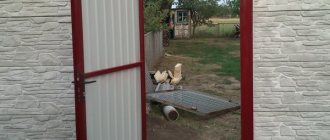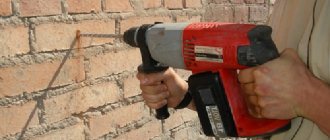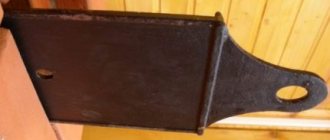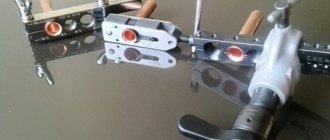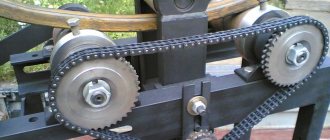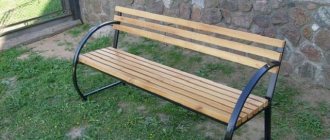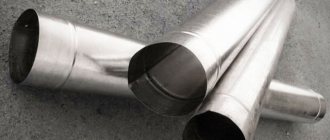Types and purpose of jewelry rollers
Such machines are used in any modern enterprise for the production of cone, oval, and cylinder shaped products from metal sheets. The process of creating such structures is called rolling. Rollers make it possible to produce any pipes, blanks for further stamping, and various finished products from metal sheets.
Before manufacturing a rolling machine, you should make a drawing of it
Simple rollers are also used in everyday life when you need to do it yourself:
- Gutters;
- Chimneys;
- Pipes;
- Air ducts;
- Other products for roofing and construction.
Modern equipment makes it possible to work with almost any metal sheet. They bend sheet material made of stainless steel, alloy and carbon alloys, aluminum and cast iron sheets without any problems. There are also roller models that operate with polycarbonate workpieces.
All equipment for working with metal sheets can be divided into the following groups:
- Handmade (jewelry);
- Electromechanical;
- Hydraulic.
The manual machine can be installed on a stand (on the floor) or on a workbench (on a table). It does not have an electric drive, so bending on it requires sufficient human strength. Manual jewelry machines are very easy to use. Their design creates the highest reliability of operation of special equipment over a long period of time.
Manual equipment is intended for producing pipes and other products from metal sheets up to 1.5-2 mm thick.
Manual machines are small in size, which makes it possible to transport them and use them directly at the site where repairs are being carried out. It should also be noted that such units do not require electricity. The cost of a manual floor or table machine is always cheaper than an electromechanical one. Machine equipment for bending sheet metal with an electric motor equipped with a gearbox is most efficient in operation. On such machines the work goes faster. The electromechanical machine is mounted permanently in the required workshop of the enterprise and is used for processing metal sheets up to 4 mm thick.
Hydraulics belong to the heavy class. Such machines are required for the creation of pipes and other structures on a large industrial scale at plants:
- Power engineering;
- Shipbuilding;
- Mechanical engineering.
In terms of potential, hydraulics are superior to mechanical and manual designs to a significant extent. It is possible to make pipes yourself from metal sheets up to 8 mm thick. Often such special equipment is equipped with program control.
Areas of application of machines
Roller mills are widely used in the production of things such as:
- chimneys;
- air ducts;
- pipes;
- ventilation systems;
- gutters.
Thanks to their compact size, the rollers can be used anywhere , right at the construction site, and hand-held devices will not damage the polymer coating of the metal.
For the food industry, crusher-type rollers are used, and for the chemical industry, sheet bending, sheeting and others are used.
Operating principle of a metal rolling machine
The main component of the machine equipment is the cast frame. It can be steel or cast iron. A special deformation mechanism is installed on the frame, which consists of 3-4 rollers. Three-rollers are usually used. Two rollers do not move; the third roller rotates during operation.
In addition, the movable shafts can move vertically.
The roller is fixed on top of the frame according to a scheme that allows you to quickly remove it if necessary or quickly adjust it for the production of pipes with different cross-sections. This structural element is adjusted using a single thumbscrew.
The metal rolling machine has a long service life
If the work rollers have grooves , you can bend them:
Manual metal bending equipment traditionally has 3 rollers, but there is a type of pipe bender with 4 rollers. But hydraulic machines are always created with 4 rolls.
Making pipes on any unit is quite simple:
- Clamping the sheet with a special handle on the machine equipment between the shaft in the middle and at the edge.
- Pressing the workpiece with the third roller.
- Rotate the roll manually or start the engine.
Rollers: operating principle
The key working mechanism of the device is a rotating cylinder through which hot sheets of metal are passed and bent. Rolling machines can be equipped with cylinders from 2 to 5 pieces , but three-roll and four-roll products are most often used.
The parts are bent through the action of the third rear shaft, and the fixing radius depends on the distance between the upper and rear shaft.
Sometimes metal rollers break and require replacement. When working with iron, the machine must be constantly heated, and the layers of iron after the rollers go into the furnace, they are heated there, and then pumped again. After that they go back to the machine.
After roller processing, the cross-section of the metal is reduced and it becomes longer under the influence of high metal temperature and degree of pressure.
To obtain a cylindrical product, the rear shaft must be adjusted parallel to the front one, and to make a cone, the rear shaft must be set at an angle relative to the front one.
There are roller models that can be used to process metal directly on the table, but they are not very functional. Working with them can be simplified using fasteners . The cost of rollers depends on their dimensions. And if you decide to make the machine yourself, you will save a lot.
The functions of modern rolling machines, home-made and factory-made, three-roll and four-roll, are as follows:
- the ability to bend pipes up to 160 degrees;
- working with metal pipes;
- deformation of pipes regardless of their diameter.
Rules for strengthening profile pipes
It is almost impossible to do without a device such as pipe rolling equipment in cases where you need to carry out repairs yourself, which will require the use of curved pipes.
To do this, you need to purchase a unit of this type or use homemade profile benders, the design of which is quite simple.
It also makes sense to ask the question of how to make a machine for bending metal because store-bought products are expensive, so buying them (especially if they are needed only for home use) is not always rational. In order to make high-quality homemade rolling, you can study the theory, watch a video on this topic, but the main thing is to listen to the advice of those who have already achieved excellent results.
When using the machine, please follow safety instructions
Naturally, to build your own rollers, you need:
- Have relevant knowledge;
- Have certain skills in manufacturing and using various technical devices;
- Prepare drawings and materials.
Do-it-yourself rollers can even be created from improvised building materials, which are almost always available in any garage or workshop at home. Moreover, such equipment, if everything is done taking into account all the recommendations, will work no worse than products from the store.
Roller specifications
When designing homemade manual three-roll rollers, it is necessary to take into account the required operational and technical qualities. The characteristics of a suitable factory model can be taken as a basis for analysis. But at the same time, its parameters must be adapted to the actual characteristics of the homemade design.
First of all, the dimensions of the machine are taken into account. They depend on the length of the shafts and affect the maximum width of the processed sheets. It must be remembered that a manual mechanism will be used as a drive, which must be done with your own hands. Therefore, usually the working width of the shaft does not exceed 1.2 m. The weight of the homemade structure will only affect the possibility of its transportation.
In addition to these indicators, it is necessary to take into account the following parameters that manual three-roll rollers must have:
- diameter of working shafts. This indicator affects the maximum possible radius of curvature of the processed material;
- degree of distance between the upper shaft and the lower guides;
- distance between the lower shafts;
- material supply speed.
When choosing a specific model of three-roll sheet bending rollers, you should accurately calculate the rigidity of the structure. Despite the fact that the pressure is mainly exerted on the shafts, the frame also experiences certain mechanical loads. Therefore, the choice of manufacturing materials and design of this machine model must be approached with special care.
The presence of three shafts in the design is optimal. When installing additional components, the degree of load on the manual drive mechanism increases, which is extremely undesirable for home-made models.
Making equipment yourself
Anyone can make such machine equipment on their own.
Before using the metal rolling machine, you should watch the training video
What building materials and how can this be made:
- The first step is to take a frame made of pipes or a bent metal profile, which will play the role of a frame.
- Next, you need to prepare a U-shaped metal profile (it is best to use hardened steel for this) to create a vertical support for the machine.
- The deforming unit of the rolling unit must be installed in the open (top) part of the metal profile. You can secure it using a clamp with a thread.
- Under the bed you need to secure the bottom of the metal profile P.
- Next, you need to take the transmission chain, without which the machine will not function, and mount it on the stars. It is necessary to tension the chain very well and check the ease of its movement.
- Now you need to mount the feed handle and attach the entire mechanism to the frame using rolling bearings.
The machine is ready. It is important to properly think through a special mechanism in its design that will make it possible to regulate the gap between the rollers. Then it will be possible to process metals of various thicknesses. You can make the most complex rollers yourself. The main thing is to prepare drawings of the machine equipment and follow the instructions.
Having studied the drawings of homemade machines, it is not difficult to make equipment that is ideally suited and will help solve the tasks.
Standard profile pipes of square or rectangular cross-section, due to their high bending strength and low weight, are widely used in construction. In cases where the permissible load values are exceeded, which occur during strong bending, the products become deformed and break. The use of pipes with a reinforced profile allows you to eliminate negative consequences.
Machine for strengthening profile pipes
Reinforcement means the formation of ribs at the corners of a square or rectangular profile during rolling on specially shaped rollers.
Pipes with a reinforced profile are characterized by high bending strength and are used to create curved structures of any degree of complexity.
The profile is strengthened using specialized equipment.
Application area
To obtain the desired configuration, profile pipes are sequentially processed on profile strengthening machines, a forging block and a pipe bender.
A pipe bender allows you to bend profile pipes along a longitudinal section along a given radius. Such products are used when installing canopies, gazebos, and canopies.
Making a machine yourself
It doesn't always make sense to purchase a professional machine. For one-time work, simple DIY installations are more suitable. The main thing is to have drawings, carefully study the design principle and operation of the machine, select high-quality materials for the workpieces and the necessary tools for assembly.
Scheme
Schematic diagram of a machine for rolling 2 types of profile sections in section. Based on it, you can get an idea of the design and interconnection of the main components and the principle of pipe processing. In this case, the upper shaft is the driving one.
Machine diagram
Accessories
Rolling roller components must not have chips or gouges, have a decent margin of safety, and be made from certain grades of steel.
Shafts and axles are turned on a lathe. Some components can be bought in a store or removed from other mechanisms, for example:
- self-aligning rolling bearings (4 pcs.);
- stars (4 pcs.);
- chain from a bicycle, moped.
To assemble the frame (base), you will need rolled metal (channels, pipes), sheets 5-10 mm thick. The base ensures stability of the installation during operation.
Frame assembly
To strengthen the profile, it is better to make rollers (2 pieces of each type) from alloy steel; for a small amount of work, St3, St10 are also suitable. Roll blanks are subjected to hardening.
Classification of machines
According to the bending method, rollers are:
- segmental, where the pipes are bent under the action of one pulling segment;
- mandrels, which deform thin-walled pipes;
- spring. Thanks to the presence of a spring, the plastic bends without deformation;
- crossbow, which are designed for pipes of one diameter or another.
Machines according to the method of use are divided into the following categories:
- Manual . Such machines are the most convenient and practical; they do not need to be connected to the network. Clamps and feed rollers with a chain drive are attached to their main frame. Manual profile machines are durable, reliable, compact, easy to adjust and have an affordable price. Manual rollers have a subcategory for jewelry; they are used for rolling and rolling jewelry blanks;
- Hydraulic . Hydraulically driven devices with high power, which are characterized by high performance. Their disadvantage is their dimensions; you cannot easily move such a unit with your own hands;
- Electrical . High productivity is achieved through the operation of an electric motor, although the principle of operation of the machine is no different from a manual one. Most often they are used on an industrial scale, since such rollers have a considerable price.
If you purchase or make a machine with your own hands for small household needs, then it is desirable that it have the following characteristics:
- mobility and light weight;
- compactness;
- economical in terms of energy consumption, since a powerful device can damage home wiring.
Recommendations
Special requirements are placed on the alignment of the rollers: they must be located in the same vertical plane and be strictly parallel. Any misalignment will lead to uneven compression of the profile, which will significantly reduce the quality of the rolled product.
A machine made at home specifically for strengthening profile pipes should not pose a danger to humans during operation. During assembly you should:
- Fix all moving parts as reliably as possible. Prevent them from bouncing during operation.
- Provide protective flaps.
Properly assembled home-made installations are not inferior to professional models in terms of the quality of their products.
